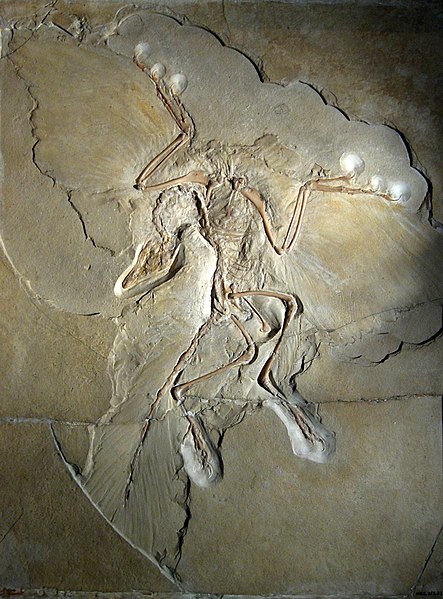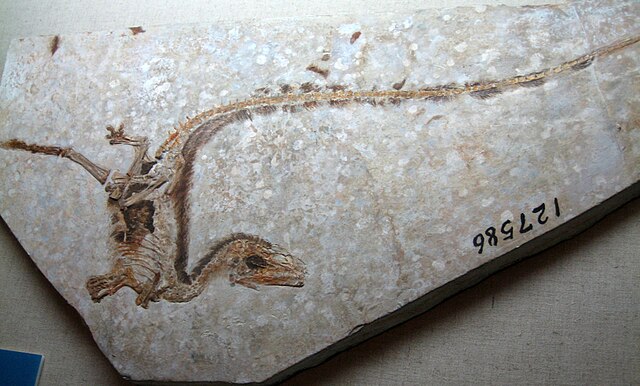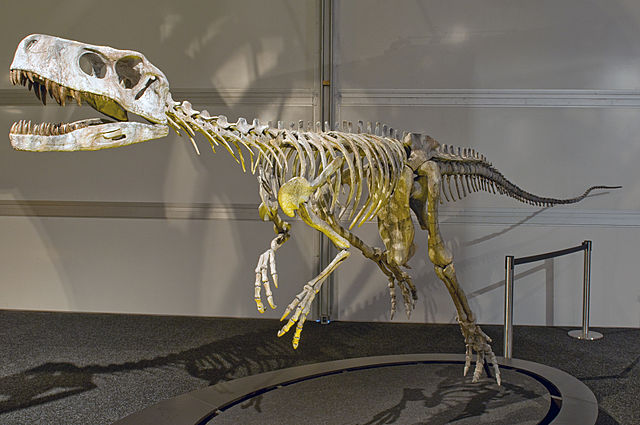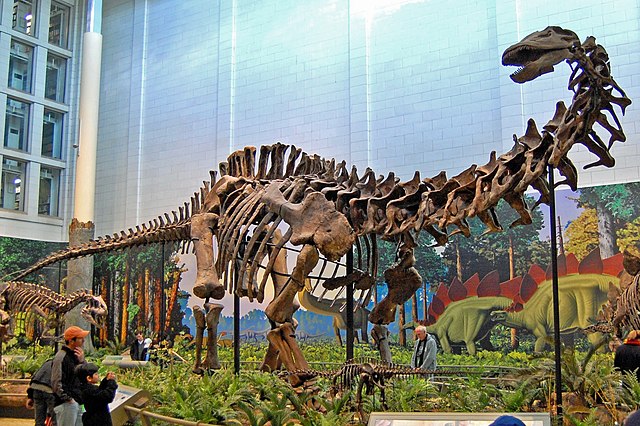A feathered dinosaur is any species of dinosaur possessing feathers. That includes all species of birds, and in recent decades evidence has accumulated that many non-avian dinosaur species also possessed feathers in some shape or form. The extent to which feathers or feather-like structures were present in dinosaurs as a whole is a subject of ongoing debate and research.
The ostrich is the largest living dinosaur.
The Berlin Archaeopteryx
Cast in Japan of a resting trace from Massachusetts, which was argued to have been made by a theropod like Dilophosaurus and to include feather impressions around the belly (arrow), but that has been questioned.
Sinosauropteryx fossil, the first fossil of a definitively non-avialan dinosaur with feathers
Dinosaurs are a diverse group of reptiles of the clade Dinosauria. They first appeared during the Triassic period, between 243 and 233.23 million years ago (mya), although the exact origin and timing of the evolution of dinosaurs is a subject of active research. They became the dominant terrestrial vertebrates after the Triassic–Jurassic extinction event 201.3 mya and their dominance continued throughout the Jurassic and Cretaceous periods. The fossil record shows that birds are feathered dinosaurs, having evolved from earlier theropods during the Late Jurassic epoch, and are the only dinosaur lineage known to have survived the Cretaceous–Paleogene extinction event approximately 66 mya. Dinosaurs can therefore be divided into avian dinosaurs—birds—and the extinct non-avian dinosaurs, which are all dinosaurs other than birds.
Image: Stegosaurus ungulatus
Image: Frenguellisaurus ischigualastensis DSC 6185
Image: Triceratops Specimen at the Houston Museum of Natural Science
Image: Louisae








